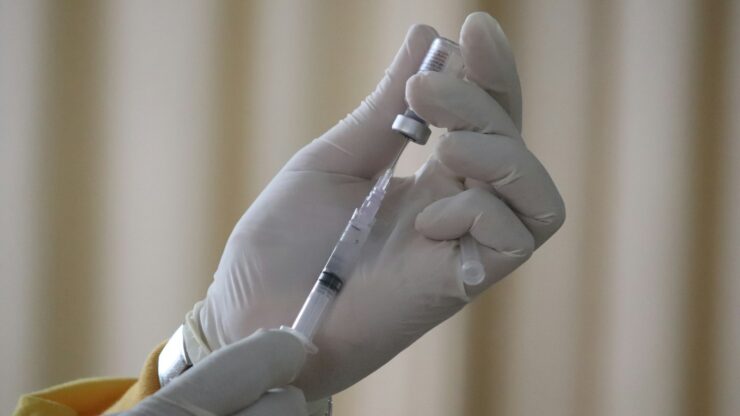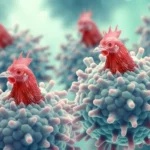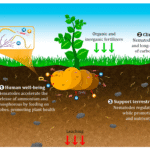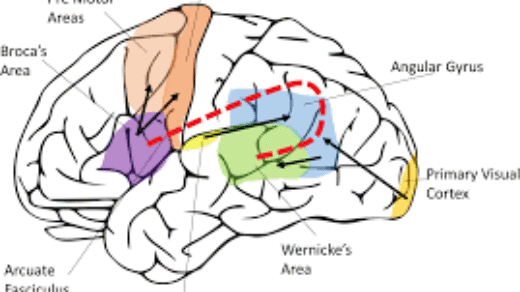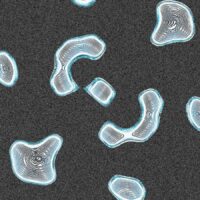How Tetanus Invade The Body
Tetanus is a severe and potentially life-threatening condition caused by the bacterium Clostridium tetani. These bacteria produce spores that are highly resistant to environmental factors and are prevalent in many places, particularly in soil, dust, and animal feces. Tetanus occurs when these spores enter the body, usually through a wound or cut, where they release a toxin that affects the nervous system, leading to muscle stiffness and spasms.
The Pathway of Infection
When the skin is punctured, torn, or otherwise compromised, Clostridium tetani spores can enter the wound. Common sources include rusty nails, needles, splinters, or any object contaminated with soil or dust.
Once inside the body, these spores can become active bacteria under anaerobic (oxygen-poor) conditions, typically found in deep puncture wounds or areas with significant tissue damage.
Susceptible Populations
While anyone can contract tetanus, certain groups are at higher risk.
These include individuals who have not been vaccinated, newborns in areas with low immunization rates, and people with inadequate wound care practices.
Pregnant women and those who have recently given birth are also at risk, particularly in regions where maternal and neonatal tetanus remain public health concerns.
Global Health Concern
Tetanus continues to pose a significant health challenge, particularly in low-income countries where immunisation coverage is limited and birth practices may be unhygienic. For instance, neonatal tetanus can occur when the umbilical cord is cut with unsterile instruments, or when contaminated substances are applied to the stump.
As of 2018, neonatal tetanus caused around 25,000 deaths globally, a stark improvement from previous decades, but still a considerable concern.
Symptoms and Diagnosis
Tetanus typically presents within 3 to 21 days after exposure, with most cases occurring within 14 days. The initial symptoms are often subtle, including jaw cramping and muscle stiffness, particularly around the wound site. As the infection progresses, more severe symptoms develop, such as:
– Muscle spasms in the back, abdomen, and extremities
– Difficulty swallowing
– Sudden, painful muscle contractions triggered by external stimuli
– Fever and sweating
– Changes in blood pressure and heart rate
In newborns, early signs of tetanus may include an inability to suck or breastfeed, excessive crying, and muscle spasms. If untreated, these symptoms can lead to severe complications, including respiratory failure and death.
Types of Tetanus
Tetanus can be classified into four main types based on the area of the body affected:
1. Generalised Tetanus
This is the most common form, affecting the entire body.
Symptoms include muscle stiffness and spasms, often beginning in the jaw (lockjaw) and then spreading to the rest of the body.
2. Localised Tetanus
This form is restricted to the muscles near the site of infection and is generally less severe.
However, it can progress to generalised tetanus if not treated.
3. Cephalic Tetanus
A rare form that occurs following head injuries or infections like otitis media.
It primarily affects the cranial nerves, leading to symptoms such as facial muscle spasms and palsies.
4. Neonatal Tetanus
A severe form affecting newborns, often due to unsanitary birth practices. This type has a very poor prognosis if not treated promptly.
Treatment and Prevention
The treatment of tetanus focuses on neutralising the toxin, controlling muscle spasms, and supporting the respiratory system.
Important interventions include:
– Wound Care: Proper cleaning of the wound is essential to remove any debris or foreign material that might harbour bacteria.
Dead tissue should also be removed to prevent bacterial growth.
– Antitoxin Therapy: Tetanus immune globulin (TIG) is administered to neutralize toxins that haven’t yet reached the nervous system. T
his is a critical early intervention.
– Vaccination: Tetanus can be effectively prevented through vaccination.
In cases where tetanus is suspected, a booster dose may be given to bolster the immune response.
– Antibiotics: These may be prescribed to kill the bacteria that produce the toxin, helping to prevent the spread of infection.
– Supportive Medications: Muscle relaxants and sedatives can help manage muscle spasms, while other medications might be used to stabilize heart rate and blood pressure.
Conclusion
Tetanus remains a significant but preventable disease.
Understanding how it enters the body, recognizing the symptoms, and knowing the appropriate treatment options are crucial steps in combating this deadly infection. Immunization is the most effective way to prevent tetanus, and maintaining proper wound care practices can significantly reduce the risk of infection.
Despite advancements in healthcare, tetanus continues to be a global health issue, particularly in regions with limited access to vaccines and healthcare services.
Engage with Us:
Stay tuned for more captivating insights and News. Visit our Blogs and Follow Us on social media to never miss an update. Together, let’s unravel the mysteries of the natural world.

